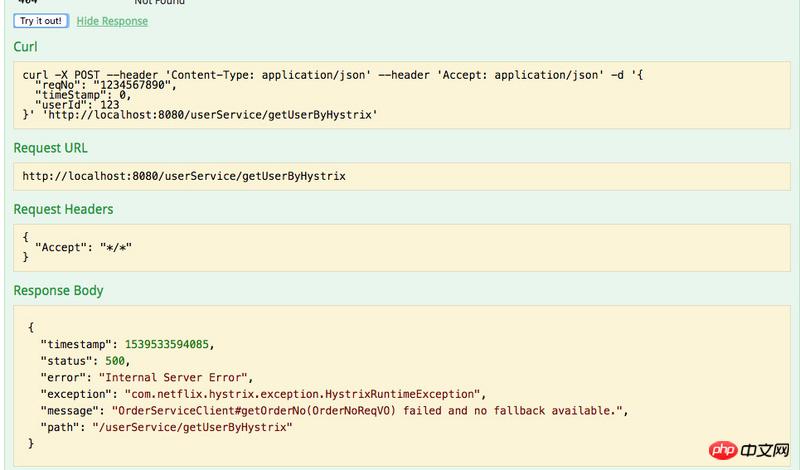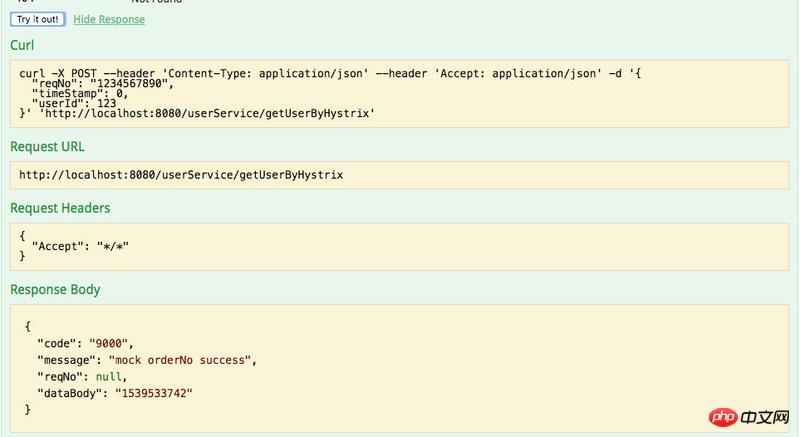Practical skills sharing of SpringBoot
The content of this article is to share practical tips about SpringBoot. It has certain reference value. Friends in need can refer to it. I hope it will be helpful to you.
Preface
Some source code and framework design things that have been shared recently. I found that everyone is not very enthusiastic. Thinking about it, most of them should be serious about writing code. This time I will share something down-to-earth: some tips on using SpringBoot.
It’s not a fancy thing, but it’s quite useful.
Shielding external dependencies
The first is to block external dependencies. What does it mean?
For example, do you have such troubles during daily development:
The project is based on distributed services such as SpringCloud or dubbo, and you need to rely on many basic services.
For example, the generation of an order number, obtaining user information, etc.Due to service splitting, these functions are provided in the form of interfaces in other applications. Fortunately, I can also use Mock to block it for single testing.
But what if you want to start the application and run your own related code at the same time?
There are usually several approaches:
Start all services locally.
Change the registration center to the development environment and rely on the services of the development environment.
Directly push the code to the development environment for self-testing.
It seems that all three are possible. I used to do this too. But there are still a few small problems:
Local startup may have a lot of services. It is unclear whether the computer can support them all. If there is a problem with the service, it will not continue.
The premise of relying on the development environment is that the network is open. Another problem is that the development environment code is very unstable and may affect your testing.
Pushing to the development environment should be a more reliable solution, but if you want to debug, there is only the log method, which is not as efficient as local debugging.
So how to solve the problem? You can debug locally without starting other services.
In fact, you can also use the single test method to remove other external dependencies Mock.
The rough process is divided into the following steps:
After SpringBoot starts, find the bean of the API you need to shield in Spring (usually this interface is It is managed by Spring).
Manually remove the bean from the bean container.
Re-create an object of this API, but it is just out of Mock.
Then manually register it into the bean container.
Take the following code as an example:
@Override
public BaseResponse<ordernoresvo> getUserByHystrix(@RequestBody UserReqVO userReqVO) {
OrderNoReqVO vo = new OrderNoReqVO();
vo.setAppId(123L);
vo.setReqNo(userReqVO.getReqNo());
BaseResponse<ordernoresvo> orderNo = orderServiceClient.getOrderNo(vo);
return orderNo;
}</ordernoresvo></ordernoresvo>It relies on orderServiceClient to obtain an order number.
The orderServiceClient is an external API and is also managed by Spring.
Replace the original Bean
The next step is to replace the original Bean.
@Component
public class OrderMockServiceConfig implements CommandLineRunner {
private final static Logger logger = LoggerFactory.getLogger(OrderMockServiceConfig.class);
@Autowired
private ApplicationContext applicationContext;
@Value("${excute.env}")
private String env;
@Override
public void run(String... strings) throws Exception {
// 非本地环境不做处理
if ("dev".equals(env) || "test".equals(env) || "pro".equals(env)) {
return;
}
DefaultListableBeanFactory defaultListableBeanFactory = (DefaultListableBeanFactory) applicationContext.getAutowireCapableBeanFactory();
OrderServiceClient orderServiceClient = defaultListableBeanFactory.getBean(OrderServiceClient.class);
logger.info("======orderServiceClient {}=====", orderServiceClient.getClass());
defaultListableBeanFactory.removeBeanDefinition(OrderServiceClient.class.getCanonicalName());
OrderServiceClient mockOrderApi = PowerMockito.mock(OrderServiceClient.class,
invocationOnMock -> BaseResponse.createSuccess(DateUtil.getLongTime() + "", "mock orderNo success"));
defaultListableBeanFactory.registerSingleton(OrderServiceClient.class.getCanonicalName(), mockOrderApi);
logger.info("======mockOrderApi {}=====", mockOrderApi.getClass());
}
}The CommandLineRunner interface is implemented, and the run() method can be called after the Spring container initialization is completed.
The code is very simple. To put it simply, first determine what environment it is. After all, except the local environment, the rest need to actually call the remote service.
The next step is to obtain the bean and delete it manually.
The key step:
OrderServiceClient mockOrderApi = PowerMockito.mock(OrderServiceClient.class, invocationOnMock -> BaseResponse.createSuccess(DateUtil.getLongTime() + "", "mock orderNo success")); defaultListableBeanFactory.registerSingleton(OrderServiceClient.class.getCanonicalName(), mockOrderApi);
Create a new OrderServiceClient object and manually register it into the Spring container.
The first piece of code uses the API of PowerMockito.mock, which can create a proxy object so that all methods calling OrderServiceClient will return by default.
BaseResponse.createSuccess(DateUtil.getLongTime() + "", "mock orderNo success"))
Test it, when we call the interface just now without replacement and it is not started locally OrderService:

Because fallback is not configured, an error will be reported, indicating that the service cannot be found.
When replacing the bean:

No error was reported when requesting again, and our default return was obtained.

You will also find through the log that OrderServiceClient has finally been proxied by Mock and will not go Call the real method.
Configuring encryption
The next step is to configure encryption, which should be considered a basic function.
For example, some accounts and passwords in our configuration files should be saved in cipher text.
So this time an open source component is used to implement encryption and decryption, and it is very friendly to SpringBoot and only requires a few pieces of code to complete.
首先根据加密密码将需要加密的配置加密为密文。
替换原本明文保存的配置。
再使用时进行解密。
使用该包也只需要引入一个依赖即可:
<dependency> <groupid>com.github.ulisesbocchio</groupid> <artifactid>jasypt-spring-boot-starter</artifactid> <version>1.14</version> </dependency>
同时写一个单测根据密码生成密文,密码也可保存在配置文件中:
jasypt.encryptor.password=123456
接着在单测中生成密文。
@Autowired
private StringEncryptor encryptor;
@Test
public void getPass() {
String name = encryptor.encrypt("userName");
String password = encryptor.encrypt("password");
System.out.println(name + "----------------");
System.out.println(password + "----------------");
}之后只需要使用密文就行。
由于我这里是对数据库用户名和密码加密,所以还得有一个解密的过程。
利用 Spring Bean 的一个增强接口即可实现:
@Component
public class DataSourceProcess implements BeanPostProcessor {
@Autowired
private StringEncryptor encryptor;
@Override
public Object postProcessBeforeInitialization(Object bean, String beanName) throws BeansException {
return bean;
}
@Override
public Object postProcessAfterInitialization(Object bean, String beanName) throws BeansException {
if (bean instanceof DataSourceProperties){
DataSourceProperties dataSourceProperties = (DataSourceProperties) bean;
dataSourceProperties.setUsername(encryptor.decrypt(dataSourceProperties.getUsername())) ;
dataSourceProperties.setPassword(encryptor.decrypt(dataSourceProperties.getPassword()));
return dataSourceProperties ;
}
return bean;
}
}这样就可以在真正使用时还原为明文。
同时也可以在启动命令中配置刚才的密码:
java -Djasypt.encryptor.password=password -jar target/jasypt-spring-boot-demo-0.0.1-SNAPSHOT.jar
The above is the detailed content of Practical skills sharing of SpringBoot. For more information, please follow other related articles on the PHP Chinese website!

Hot AI Tools

Undresser.AI Undress
AI-powered app for creating realistic nude photos

AI Clothes Remover
Online AI tool for removing clothes from photos.

Undress AI Tool
Undress images for free

Clothoff.io
AI clothes remover

AI Hentai Generator
Generate AI Hentai for free.

Hot Article

Hot Tools

Notepad++7.3.1
Easy-to-use and free code editor

SublimeText3 Chinese version
Chinese version, very easy to use

Zend Studio 13.0.1
Powerful PHP integrated development environment

Dreamweaver CS6
Visual web development tools

SublimeText3 Mac version
God-level code editing software (SublimeText3)

Hot Topics
 1378
1378
 52
52
 Perfect Number in Java
Aug 30, 2024 pm 04:28 PM
Perfect Number in Java
Aug 30, 2024 pm 04:28 PM
Guide to Perfect Number in Java. Here we discuss the Definition, How to check Perfect number in Java?, examples with code implementation.
 Random Number Generator in Java
Aug 30, 2024 pm 04:27 PM
Random Number Generator in Java
Aug 30, 2024 pm 04:27 PM
Guide to Random Number Generator in Java. Here we discuss Functions in Java with examples and two different Generators with ther examples.
 Weka in Java
Aug 30, 2024 pm 04:28 PM
Weka in Java
Aug 30, 2024 pm 04:28 PM
Guide to Weka in Java. Here we discuss the Introduction, how to use weka java, the type of platform, and advantages with examples.
 Smith Number in Java
Aug 30, 2024 pm 04:28 PM
Smith Number in Java
Aug 30, 2024 pm 04:28 PM
Guide to Smith Number in Java. Here we discuss the Definition, How to check smith number in Java? example with code implementation.
 Java Spring Interview Questions
Aug 30, 2024 pm 04:29 PM
Java Spring Interview Questions
Aug 30, 2024 pm 04:29 PM
In this article, we have kept the most asked Java Spring Interview Questions with their detailed answers. So that you can crack the interview.
 Break or return from Java 8 stream forEach?
Feb 07, 2025 pm 12:09 PM
Break or return from Java 8 stream forEach?
Feb 07, 2025 pm 12:09 PM
Java 8 introduces the Stream API, providing a powerful and expressive way to process data collections. However, a common question when using Stream is: How to break or return from a forEach operation? Traditional loops allow for early interruption or return, but Stream's forEach method does not directly support this method. This article will explain the reasons and explore alternative methods for implementing premature termination in Stream processing systems. Further reading: Java Stream API improvements Understand Stream forEach The forEach method is a terminal operation that performs one operation on each element in the Stream. Its design intention is
 TimeStamp to Date in Java
Aug 30, 2024 pm 04:28 PM
TimeStamp to Date in Java
Aug 30, 2024 pm 04:28 PM
Guide to TimeStamp to Date in Java. Here we also discuss the introduction and how to convert timestamp to date in java along with examples.
 Create the Future: Java Programming for Absolute Beginners
Oct 13, 2024 pm 01:32 PM
Create the Future: Java Programming for Absolute Beginners
Oct 13, 2024 pm 01:32 PM
Java is a popular programming language that can be learned by both beginners and experienced developers. This tutorial starts with basic concepts and progresses through advanced topics. After installing the Java Development Kit, you can practice programming by creating a simple "Hello, World!" program. After you understand the code, use the command prompt to compile and run the program, and "Hello, World!" will be output on the console. Learning Java starts your programming journey, and as your mastery deepens, you can create more complex applications.




